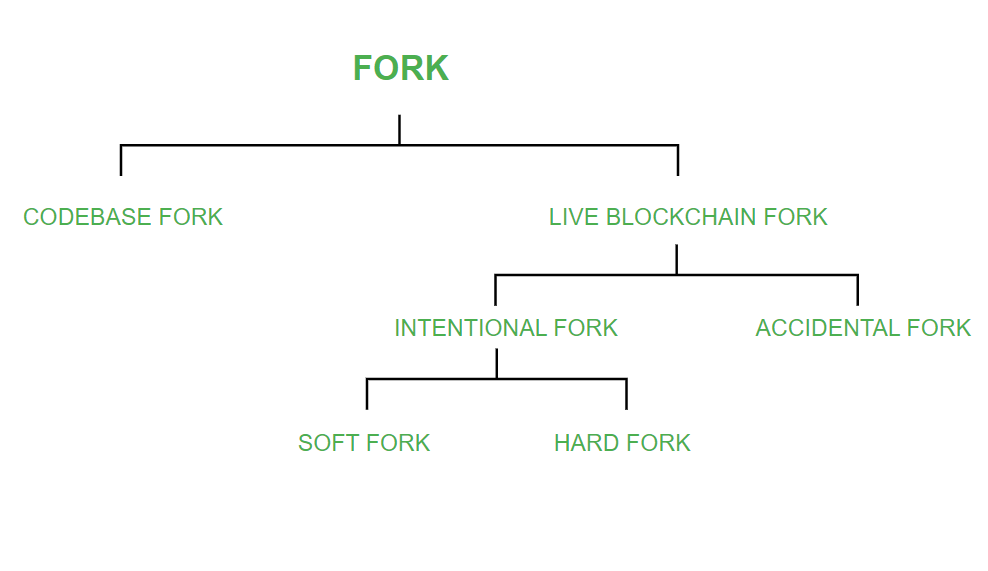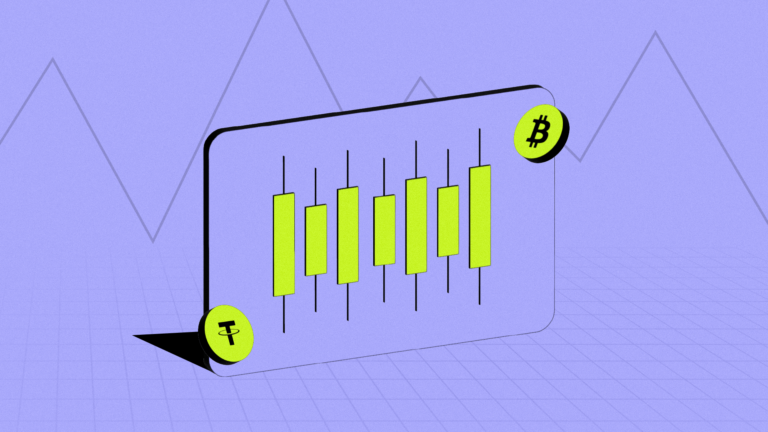Blockchain technology has revolutionized the way we conduct transactions, and it has become an integral part of our lives. Blockchain/Blockchain Forks offers a decentralized and transparent system that eliminates the need for intermediaries, making transactions faster, cheaper, and more secure.
With the increasing use of blockchain technology, the concept of blockchain forks has gained significant attention. Blockchain Forks are an important aspect of the blockchain protocol that determines the rules for adding new blocks to the blockchain.
In this blog, we will look at what soft forks and hard forks are and how they differ from one another. By the end of this blog, you will have a better understanding of both the forks and how they impact the blockchain network.
What are Blockchain Forks?
Blockchain forks are essential to understand as they can impact the way the blockchain works. When a blockchain fork occurs, the blockchain network is essentially split into two separate chains, and two sets of rules are created. This can lead to significant implications for the network. Since it can impact the security, reliability, and overall functioning of the blockchain.
Blockchain Forks occur when a change is made to the blockchain protocol. These changes can be made for a variety of reasons. Those reasons include improving the performance of the blockchain, adding new features, or resolving a contentious issue. When a change is made, it is proposed to the network, and the nodes connected to the network vote on whether to accept the change or not.
If a sufficient number of nodes agree to the change, it is implemented in the blockchain. And a new block is created. This block contains the new rules, and it is added to the blockchain. If, however, a significant number of nodes do not agree to the change, a fork occurs.
The impact of a fork on the blockchain network can vary significantly depending on the type of fork that occurs. Basically, there are two types of Blockchain Forks: soft forks and hard forks.
Soft forks are less disruptive than hard forks, as they do not result in a permanent split in the blockchain. However, hard forks are more disruptive, as they result in a permanent split in the blockchain.
In short, blockchain forks occur when changes are made to the blockchain protocol. And the network nodes vote on whether to accept the changes or not. The impact of a fork on the blockchain network can vary significantly depending on the type of fork that occurs.
What is Soft Fork?
A soft fork is a type of blockchain upgrade that is backward-compatible. This implies that the new version of the blockchain is compatible with the old version. This compatibility ensures that nodes using the old version can still validate the new blocks and transactions that are added to the blockchain.
In a soft fork, the changes made to the blockchain protocol are typically minor. And they do not result in a permanent split in the blockchain. Instead, a soft fork creates a temporary divergence in the blockchain. This can be resolved when the majority of the nodes adopt the new version of the blockchain.

One of the advantages of a soft fork is that it requires a higher degree of consensus among the nodes in the network. This is because the new version of the blockchain must be compatible with the old version. And it must be widely adopted by the network to ensure a smooth transition.
In short, soft forks are typically used to implement minor upgrades to the blockchain. Those changes include fixing bugs or improving the performance of the blockchain. They can also be used to introduce new features to the blockchain, such as new transaction types or consensus mechanisms.
What is Hard Fork?
A hard fork is a type of blockchain fork that involves a non-backward-compatible upgrade to the blockchain protocol. It is called a “hard” fork because it results in a permanent divergence in the blockchain.
In a hard fork, the new version of the blockchain is not compatible with the old version. This indicates that nodes that have not upgraded to the new version will not be able to validate new blocks on the blockchain.

Hard forks are usually initiated to implement significant changes to the blockchain protocol that cannot be achieved through a soft fork. For example, if there is a need to increase the block size limit to improve scalability, a hard fork may be initiated to implement this change.
Hard forks can also be used to resolve contentious issues within the blockchain community. The issues like changes to the consensus algorithm or changes to the rewards structure for validating blocks.
The process of implementing a hard fork involves creating a new branch of the blockchain that is separate from the original blockchain. This new branch will continue to operate according to the new protocol. Meanwhile, the original blockchain will continue to operate according to the old protocol.
One of the key challenges with a hard fork is achieving consensus among the nodes in the network. Because hard forks result in a permanent split in the blockchain. This is essential to ensure that the majority of the nodes in the network agree with the changes being made.
This implies that hard forks are an essential aspect of blockchain technology and are used to implement significant changes to the blockchain protocol. However, they are also more disruptive than soft forks, as they result in a permanent split in the blockchain.
Difference between Soft Fork & Hard Fork
The blockchain and cryptocurrency communities are divided over which type of fork is best for strengthening blockchain networks. Although each type of fork has its own set of advantages. So, let’s take a look at some of the key differences between the two forks:
- Compatibility with the Old Version of the Blockchain: As mentioned earlier, the key difference between a soft fork and a hard fork is their compatibility with the old version of the blockchain.
A soft fork is a type of upgrade that is compatible with the previous version of the blockchain. However, a hard fork is a type of upgrade that is not compatible with the previous version of the blockchain.
- Degree of Consensus Required to Implement the Upgrade: Soft forks require a higher degree of consensus than hard forks because they are backward-compatible upgrades. This means that the nodes in the network must agree to the upgrade before it is implemented.
- Impact on the Blockchain Network: Soft forks are less disruptive than hard forks because they do not result in a permanent split in the blockchain network.
Soft forks may result in a temporary split in the network. However, hard forks are more disruptive than soft forks because they result in a permanent split in the network.
- Purpose of the Upgrade: Soft forks are typically used to introduce minor changes to the blockchain. However, hard forks are typically used to introduce major changes to the blockchain. The changes include the upgradation of the consensus mechanism or adding new features.
This indicates that both types of forks have their own advantages and disadvantages. And the choice of fork depends on the specific situation and the degree of consensus among the network nodes.
Which One is More Beneficial: Soft Fork or Hard Fork?
When it comes to determining which fork is more beneficial, it ultimately depends on the specific situation and the degree of consensus among the network nodes.
Soft forks are generally considered to be less disruptive than hard forks. Since they don’t result in a permanent split in the blockchain. This means that nodes that don’t upgrade to the new version can still validate blocks. And continue to operate on the old version of the blockchain.
One of the main benefits of a soft fork is that it is backward-compatible. This means that nodes running the old version of the blockchain can still participate in the network without any issues. As a result, there is less disruption and less risk involved with implementing a soft fork.
However, hard forks are generally considered to be more disruptive than soft forks. Since they result in a permanent split in the blockchain. This means that nodes that don’t upgrade to the new version cannot validate blocks and will operate on a separate blockchain. This can create confusion and potentially lead to a loss of funds for users who don’t upgrade their nodes.
Additionally, hard forks can be used to resolve contentious issues in the blockchain where there is a significant degree of disagreement among network participants.
Overall, the choice between a soft fork and a hard fork depends on the specific situation and the degree of consensus among network participants. Soft forks are generally less disruptive and require a higher degree of consensus, while hard forks can introduce significant changes but require a lower degree of consensus. Ultimately, the goal should be to choose the fork that best achieves the desired outcome while minimizing disruption and risk to the network.
Conclusion
Blockchain Forks play a crucial role in the development and evolution of blockchain technology. Meanwhile, both soft forks and hard forks have their own advantages and disadvantages. But the choice of fork ultimately depends on the specific situation and the degree of consensus among the network nodes.
It is worth noting that both types of forks can create new opportunities and challenges for blockchain technology. Forks can lead to the creation of new blockchains and tokens, which can increase the diversity and innovation in the blockchain ecosystem. However, forks can also create confusion and fragmentation, which can undermine the stability and security of the blockchain.
In short, the decision to implement a soft fork or hard fork should be based on a careful evaluation of the benefits and risks of each approach. The success of the fork ultimately depends on the degree of consensus among the network nodes and the ability of the blockchain community to adapt to changes and embrace innovation.
To know more about the Blockchain Forks, go check out SunCrypto Academy.






